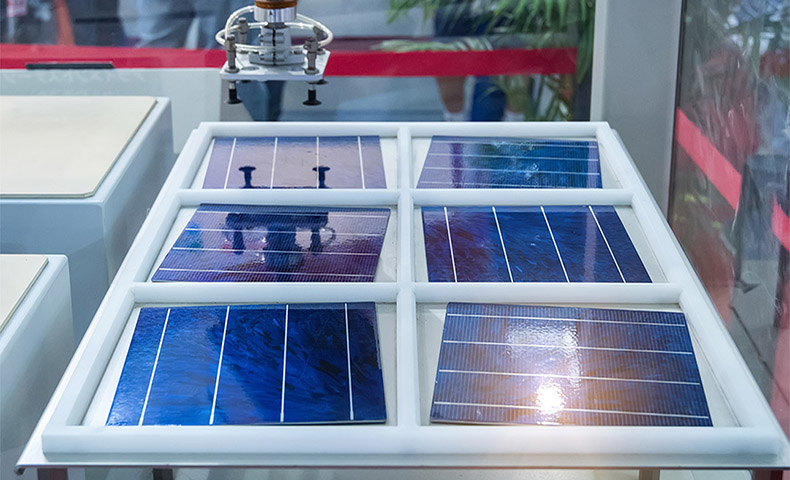
Whenever you’re in the market for an electronic item, you want to make sure it’s well made, has a good reputation for reliability and, most importantly, will have a long-lasting high performance.
It’s the same with solar panels. Only in this instance, you want to make sure the modules that are placed on your roof keep producing electricity for its estimated lifespan (25 - 30 years) and also will the company that produces them offer a warranty good enough in case they break down or are damaged down the line.
Ten years ago, choosing a solar panel was fairly simple. You had U.S. and European brands, plus a few Chinese ones. While the latter had lower cost, they often came with shorter warranties and a lack of name recognition. But in today’s solar world, as companies have come and gone, mergers have taken place and technology has improved both at home and abroad, it is increasingly difficult to discern what’s a good solar panel over another one.
Different levels
To resolve this issue and so that buyers are fully aware of what they’re getting, the solar panel industry came up with a tiered classification: Tier 1, Tier 2 and Tier 3.
Generally speaking Tier 1 solar panel manufacturers are defined as those that:
A Tier 2 manufacturer is often small to medium scale manufacturer established less than five years ago that doesn’t have Research and Development (R&D) activities and usually buys the wafers (the solar cells) from a Tier 1 manufacturer. Not all the processes are automated in a Tier 2 company; some is done by humans, allowing for higher fault risk.
And finallyTier 3 refers mostly to those companies that function as assemblers and include about 90% of new solar companies. These entities don’t manufacture solar cells and only use human production lines for manual soldering of those they buy from other manufacturers, allowing for a higher potential of problems later.
Some of the Tier 1 solar panel manufacturers include Canadian Solar, Hanwha and LG. Fortune Energy has a large selection of these solar panels and other brands that meet the highest quality and offer the best warranties.
Tier 1 ranking scale does not necessarily refer to the efficiency of the actual solar panels. It is organized by Bloomberg New Energy Finance Corporation and is used to rank solar panel manufacturers in terms of their bank-ability or financial stability.
However, the list is still a good indicator or companies that may produce better products and may still be in operation if something malfunctions with the panels. That’s why, typically, tier 1 solar panels are 10-30% more expensive than tier 2 and tier 3 solar panels.
Longer and better warranties
Part of this premium has to do with longer and better warranties. Tier 1 companies have a better manufacturing process and so it is less likely there will be defects in their products. Their corporate strength and quality manufacturing means that if there ever is a quality problem they will fix it.
If a company has invested a large amount of money in promoting their brand then they are less likely to allow any defective product to damage this brand. Their investment in their brand means they have an incentive to invest in quality control in their manufacturing and also to respond favorably to warranty claims.
That’s why they will normally include longer warranties with these panels, both in terms of workmanship and performance. The workmanship warranty on solar panels covers any physical defects that stem from manufacturing errors, such as imperfections in the frame or glass, loose junction boxes, faulty connectors, bad cells or damaged cell connections and defective backsheet.
If the panel malfunctions due to a manufacturing defect, that is covered under the workmanship warranty
The performance warranty guarantees your panels will produce near their rated output over the life of ownership. For instance, Tier 1-class producers of solar panels guarantee that during the first year of solar panels exploitation generation losses will be no more than 0.8%, so after 10 years of outputing power capacity of a panel will decrease no more than 8-10%. The performance warranty ensures your system’s output is reliable and consistent. If a panel’s output suddenly drops dramatically, it would be covered for replacement under the performance warranty.
Most solar panels come with a 25-year performance warranty. This is the industry standard from Tier 1 manufacturers at the moment.
Workmanship warranties cover a shorter timeframe, typically 10 years, but it varies by manufacturer.
HahaSmart Blog - More Solar Tips and Guide
HahaSmart News - Stay Informed
Your Solar Incentives - See Credits and Incentives in Your Area
Check Your Home's Solar Price - See How Much You Save
Register Now - Unlock The Lowest Solar Prices in Your Area


Input your address to see if it is solar friendly and how much you can save with solar.
Great. Your address is perfect for solar. Solar incentive is still available. Select monthly utility cost and calculate the size of solar system you will need now.
| kw System size | years Payback period | Lifetime savings |
No money down, 100% finance is available.
|
|
Check the price of solar panels in your area in a matter of seconds! |
Comments